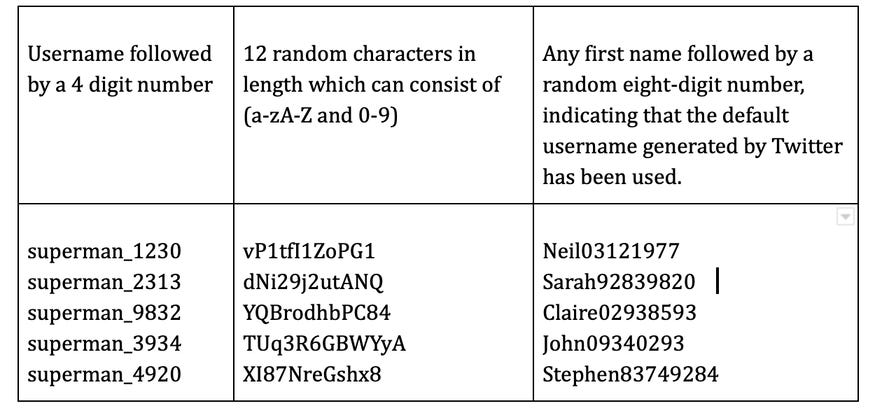False comparisons of Kremlin aggression to US-Mexico border could serve Kremlin by stifling US response
Conservative outlets, influencers, foreign state-affiliated media, and conspiracy belief groups appear to have aligned on Russian aggression at the Ukrainian border
NOTE: Hoaxlines research does not address attribution. See the disclaimer regarding attribution and users appearing in the dataset. Readers should not regard the appearance of a user in the dataset as evidence of awareness or cooperation with platform manipulation.
The following is a working paper, which means the contents are still subject to change and may contain errors. Content is being shared due to the rapidly developing situation at the Ukrainian border.
Hoaxlines assesses that polarizing our responsibilities to NATO by repeating pro-Kremlin talking points and conflating the situation in Ukraine with the US-Mexico border security is likely to increase in the coming weeks. Inauthentic amplification and platforming of fringe domestic voices are standard Russian tactics for promoting its message within the U.S., so we should consider whether sowing these favorable narratives serves a strategic aim for the Kremlin.
Stoking division on a historically bipartisan issue could plausibly delay or prevent any American aid or response to the situation in Ukraine should Putin choose to invade. Three key narratives are emerging, and they could all serve to generate a similar strategic paralysis.
On Twitter, a coordinated network appears to be boosting the Kremlin’s preferred narrative from foreign and domestic sources, which does not necessarily demonstrate the amplification is linked to Russia or the accounts boosted by the activity. Russian-state affiliated media, US conservative media, and personalities, as well as conspiracy groups, seem to have converged on a stance that could conceivably threaten long-term U.S. security with its short-term and reductionist view of the buildup along the Ukrainian border.
Narratives (not factual reporting) emerging
Biden can’t secure the US border, so it’s hypocritical that the US is concerned about the Ukrainian border.
The situation in Ukraine is between Russia and Ukraine, and NATO and Western interference is inappropriate and unwarranted.
Americans have nothing to gain by helping Ukraine, and we have enough problems at home, so we should resist the warmongers driven by money and national interest.
The conversation around the US-Mexico border has been fraught with mis- and disinformation, misleading claims, and exploitation. Some variations compare two different situations, which may serve to polarize the public on a previously bipartisan issue, aid to Ukraine. The juxtaposition of the two betrays either an attempt to influence or a poor understanding of our stake in the European situation. The conversation around the US-Mexico border has been fraught with mis- and disinformation, misleading claims, and exploitation.
Earlier in the year, apparent inauthentic activity boosted the hashtag “BidenBorderCrisis.” The coverage and claims resembled those we saw in 2018 when migrants were again the topic of disinformation. The surge followed a still unidentified fake account that encouraged people to head toward the US border. The circumstances bear some resemblance, although this does not demonstrate the two situations are the same, to the weaponizations of immigrants by the Belarusian government recently. The page comes from Putin’s authoritarian playbook.
Domestic voices
Far-right and mainstream conservative voices seem to be settling on an alarmingly pro-Kremlin set of talking points that portray the US interests in Ukraine as marginal. Partisan actors may leverage the division to gain notoriety, which would come at the expense of the country’s standing globally. Credible media sources should ascertain whether trending topics are organically trending or driven by platform manipulation, and be aware of the likelihood that ignoring manipulated trends could result in accusations of media bias. If the assertions are without merit, then it is best that the media not respond to the false claims, which can be used as a form of reflexive control, which is a strategy for controlling a group by creating circumstances that make the target react a predictable manner.
The account that received the most incoming links, meaning retweets, replies, likes, or quotes, was MattWalshblog. Like much of the dataset, accounts boosting the tweet from MattWalshBlog frequently had multiple traits that cast doubt on their authenticity. This does not indicate that MattWalshBlog is necessarily aware or complicit in any platform manipulation. No consent is required to target someone with an amplification network.
Still, many accounts in this network appeared exclusively devoted to American right-wing talking points, which begs who is responsible for the significant organization, coordination, resources, and funding needed. Unfortunately, that is not a question we can answer with the evidence in this report.
Examples of similar messaging from domestic media or influencers
Joe Biden is willing to wage war against Russia over Ukraine's border, yet he refuses to even visit his own border
10:18 AM · Dec 8, 2021·Twitter for Android
The US has a security crisis at its southern border. Yet most members of Congress are more focused on beating the drums of war with Russia over Ukraine. The American people are fed up with endless wars with no true security implications for the home front Hold them accountable.
2:20 PM · Dec 8, 2021·Twitter for iPhone
The way our institutions are cheering a war with Russia over Ukraine is downright creepy. From the corporate press to the professional bureaucrats of DC. No, no, no: secure our own border before we worry about anyone else’s.
11:17 AM · Dec 8, 2021·Twitter Web App
America is being invaded at the southern border, and Joe Biden won’t do a thing about it.
1:40 PM · Dec 8, 2021·Twitter for iPhone
So, Biden's position is that Ukraine deserves "territorial integrity," i.e., a secure border, but he has no problem leaving the US border wide open...does that sound right? #BuildtheWall
8:48 AM Dec 8, 2021 Twitter Web App
Why should we care about securing Ukraine’s borders when our border is a complete and total disaster? Secure America’s borders FIRST!
6:54AM Dec 8, 2021 Twitter for iPhone
Biden is willing to risk a potential nuclear war with Russia for crossing the border into Ukraine but won’t even secure our own southern border. Priorities.
2:55 PM Dec 7, 2021 Twitter Web App
Russia is massing troops on Ukraine border BECAUSE Biden gave Putin Nord Stream 2 pipeline (allowing Russia to bypass Ukrainian pipelines). Dems know this. They’ve said it repeatedly. We can stop #BidenPutinPipeline But for partisan reasons Dems are afraid to stand up to WH.
9:16 PM Dec 5, 2021 Twitter for iPhone
America is being invaded at the southern border and Joe Biden won’t do a thing about it.
12:40 PM Dec 8, 2021 Twitter for iPhone
What does America even gain by involving itself in a war with Russia? Please explain this to me. Serious question.
2:56 PM Dec 8, 2021 Twitter for iPhone
What has Ukraine ever done for the US? Not sure why the troops need to go there and die fighting Russians.
3:03 PM Dec 8, 2021 Twitter for iPhone
Foreign narratives
Russian state-affiliated outlets and pro-Kremlin sources have so far:
Deflected to the US-Mexico border, despite the situation not being a valid comparison.
Claimed the US should stay out of disagreement or that the US and NATO are provoking a fight between Ukraine and Russia, two countries that Russia sees as destined to be a united state, or with Russia.
Praised Putin for defending his border or portraying him as responsive to provocation, although none have taken place and Russia is illegally occupying Crimea, Ukraine.
The US is portrayed as incompetent and inappropriately intruding in a disagreement between Ukraine and Russia. Several stories published on December 8 deflected to the US-Mexico border and platformed US conservatives’ portrayal of the situation.
The US-Mexico border warrants attention and is indeed troubling, but this is a false dichotomy. The US can and should address both.
Examples of foreign state-affiliated content
GOP Lawmaker Urges Going ‘Beyond Political Labels’ to Address Border Crisis, Suggests His Own Plan
Is Aggressive US Rhetoric Against Russia the Result of Biden's Poor Standing at Home?
Arizona's Ducey Calls in National Guard to Border, Urges Biden to 'Do Anything'
Russia: 'Complete nonsense'—Putin on US security justification for sanctions against MIPT
It would be ‘criminal’ for Russia to allow Ukraine to join NATO. —Putin
8:56 AM · Dec 8, 2021 · Twitter Media Studio - LiveCut
US Senator won’t rule out a nuclear strike against Russia
3:51 PM · Dec 8, 2021·TweetCaster for Android
Ukraine-Russia discussion on Twitter
The data, collected from the search query Ukraine- and Russia-related search query, did contain formation seen in past information operations. That does not necessarily indicate that one is taking place, nor does it indicate that accounts appearing in the dataset are complicit in such an effort. Hoaxlines assessment is of low to moderate confidence, so this assessment should be viewed with caution.
The network appears to have a substantial amount of coordinated amplification, possibly from follow train networks. The goal of this type of media manipulation—according to studies and large-scale investigation—was to get a topic to trend and sway public opinion and reporting. These methods can be used to disinform or target individuals to discourage them from criticism or activism.
The most active users often have multiple inauthentic traits beyond the typically recent creation date. Past research shows that inauthentic networks engage in controversies and hold hyperpartisan stances. How often the account replies or retweets and posting patterns can also strongly signal automation or inauthentic activity—as the two are not synonymous.
We pulled the creation dates for accounts with outgoing links, an exceptional number came from 2020 and 2021. First Draft, a site devoted to tracking, reporting, and researching misinformation, stated that creation dates are a key indicator of inauthentic activity:
“A key indicator is the account’s creation date. An account or group of accounts that were created recently, such as in the last year or few months, can be used to flag suspicious or bot-like activity.”
DataJournalism.com published a study that examined suspicious tweets. Among the tweets that had indicators of inauthenticity, the report noted that creation dates were “very recent.” NortonLifeLock, a cybersecurity company, lists “recent creation dates” in a section titled “7 ways to recognize a Twitter bot.”
The most active users frequently had multiple traits beyond a recent creation date that strongly suggested inauthentic accounts, such as a blank profile picture or a computer-generated or stolen one. We also found bios containing only general or unverifiable information, identity signaling, and formulaic handles that consist of alphanumeric scrambles or names with number strings. Inauthentic accounts can be operated by a human, so this is not an assertion that the accounts are automated.
Another trait that can be indicative in the presence of multiple traits of inauthentic accounts is formulaic names. Bot creators often deploy a strategy to help them easily find unused usernames. Scripts with criteria like the following are used to automatically create usernames:
All of these are traits that, while they cannot prove inauthenticity, increase the chances an account is fake. Exclusively posting low-quality sources or mis- and disinformation, a history of hyperactivity in divisive discourse and controversies, or imitation of hyperpartisan stances further track with what we expect from inauthentic accounts and activity. How often the account replies or retweets and posting patterns can also strongly signal automation.
The Digital Forensic Lab’s (DFR Lab) guide to spotting fake accounts states:
“The benchmark for suspicious activity varies. The Oxford Internet Institute’s Computational Propaganda team views an average of more than 50 posts a day as suspicious; this is a widely recognized and applied benchmark, but may be on the low side. [DFR Lab] views 72 tweets per day (one every ten minutes for twelve hours at a stretch) as suspicious, and over 144 tweets per day as highly suspicious.”
Hoaxlines found multiple users tweeting hundreds of times per day. Regardless of how long amplification bots are on a platform, they sometimes see little to no response to any original posts. This can help identify fake accounts because humans rarely persist at a high tweet rate without engagement.
Why fake accounts boosting misinformation matters
Platforms that exempt high-profile users from platform manipulation policies thus enable actors, both foreign and domestic, to influence and mislead the public without consent or knowledge.
The consequences of mis- and disinformation fall onto already vulnerable groups unequally and sometimes facilitate human rights abuses. In the more extreme scenarios, these methods could be weaponized against the United States, threatening national security. That’s a potentiality that only exists with platform complicity.
Funding and conflicts of interest declaration
Hoaxlines generates no profit and, as yet, has accepted no donations. Study volunteers footed the cost for the study, and Hoaxlines has not provided financial or non-financial compensation.
Hoaxlines has no patrons, funding, or institutions to which it must answer. We report what we find and attempt to check our existing biases.
This study is unaffiliated with any other organization or institution, regardless of any author’s scholarship or employment. The research and conclusions represent Hoaxlines alone. The views expressed in this report reflect sincere author impressions at the time of the study.
The part(ies) responsible for the probable platform manipulation in this report are not addressed and cannot be assessed based on the information in this report alone. Including a name does not imply that the party was aware of or partook in platform manipulation. Users have no control over who mentions them.












